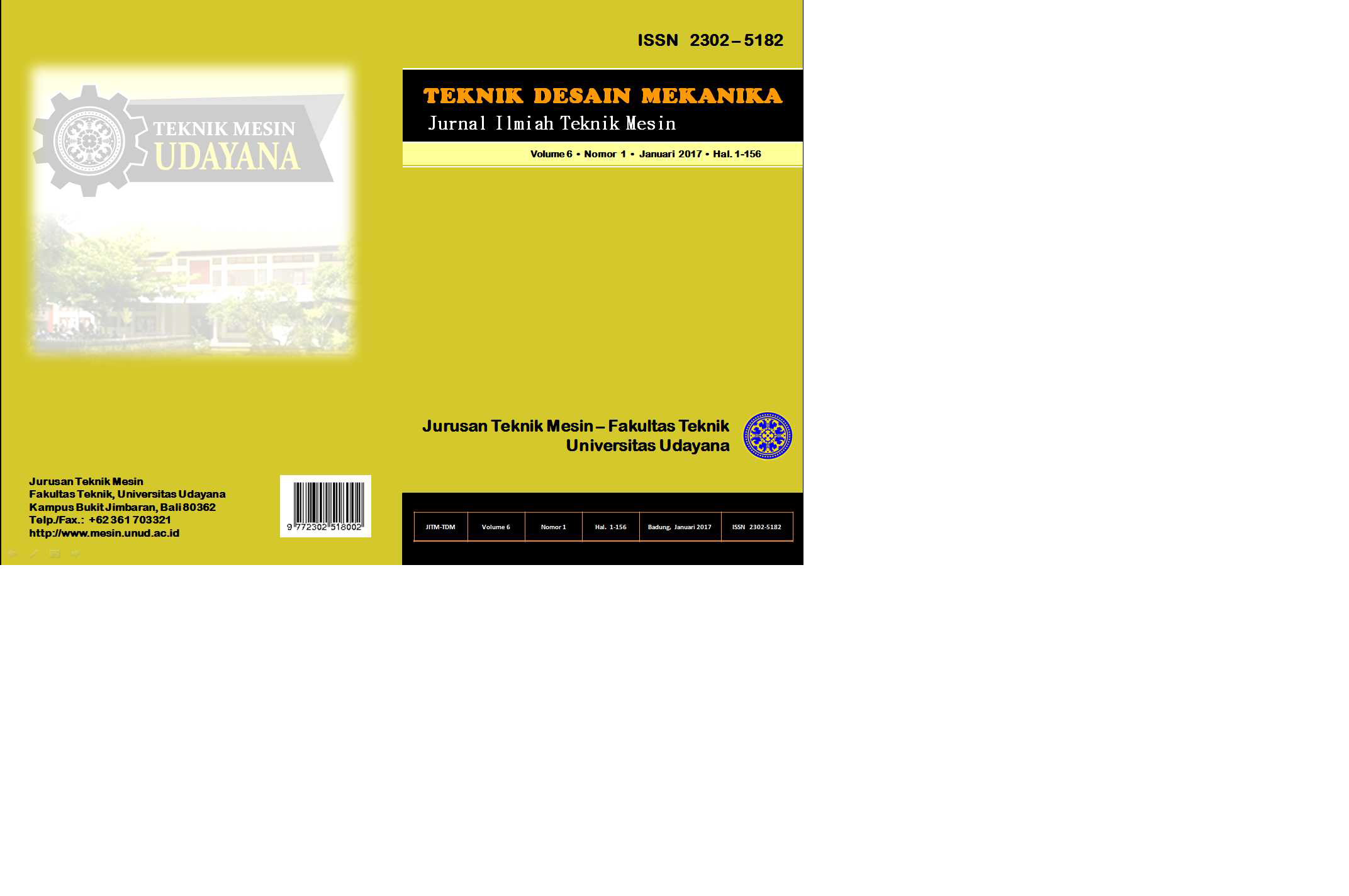Studi Kecepatan Udara Superfisial Pada Cold Model Dual Reactorfluidized Bed
Abstrak
Abstrak
Teknologi dual reactor fluidized bed (DRFB) adalah jenis reaktor fluidisasi yang sedang dikembangkan untuk meningkatkan
efisiensi pengkonversian bahan bakar menjadi syngas. Dalam pengembangan DRFB perlunya mengetahui sirkulasi
campuran bahan bakar dan material hamparan pada reaktor tersebut. Cold model DRFB dibuat berbahan akrilik untuk
mengamati fenomena sirkulasi campuran bahan bakar dan material hamparan.Material uji yang digunakan adalah partikel
batubara dan tanah liat sebagai material hamparan dengan ukuran antara 0,4mm-0,5 mm. Partikel batubara dan material
hamparan disirkulasikan pada reaktor dengan variasi kecepatan superfisial, yaitu : variasi I (15 m/s), variasi II (17 m/s),
variasi III (20 m/s), dan variasi IV (23 m/s). Kecepatan superfisial terdiri dari udara primer dan udara sekunder, dimana
pada udara sekunder ditetapkan konstan yaitu 10 m/s. Pengukuran yang dilakukan adalah tekanan di sepanjang reaktor dan
massa material yang melewati riser dan downer.Semakin meningkat kecepatan superfisial yang masuk ke dalam reaktor
maka tekanan yang dihasilkan semakin besar. Tekanan akan semakin besar jika semakin dekat dengan pusat hembusan
udara primer maupun sekunder. Material terbanyak yang dapat disirkulasikan terdapat pada kecepatan 17 m/s.
Kata kunci : Dual reaktor fluidized bed, fludisasi, kecepatan superfisial, gasifikasi fluidized bed
Abstract
Technology dual fluidized bed reactor (DRFB) is a type of fluidized reactor that is being developed to improve the efficiency
of conversion from fuel into syngas. In the development of DRFB need to know the circulation mixture of fuel and bed
material on the reactor.Cold DRFB models made from acrylic to observe the phenomenon of the circulation fuel mix and bed
material.Test material used coal particles and clay as bed material with size between 0,4mm and 0,5mm. Coal particles and
bed material is circulated in the reactor with variation of superficial velocity, that is : variation I (15 m/s), variation II (17
m/s), variation III (20 m/s), and variation IV (23 m/s). Superficial velocity was divided into primary air and secondary air,
where in the secondary air is set constant which is 10 m/s. Measurement taken is the pressure in the reactor and the mass of
material that passes through the riser and downer. Increasing the superficial velocity in the reactor, the pressure generated
greater. The pressure will be even greater if it is getting close to the center of gusts of primary and secondary air. Most
material can be circulated contained in the superficial velocity 17 m/s.
Keywords: Dual reactor fluidized bed, fluidization, superficial velocity, fluidized bed gasification


